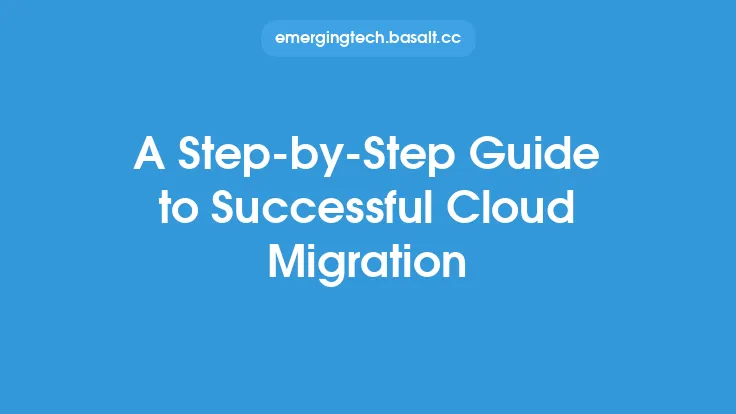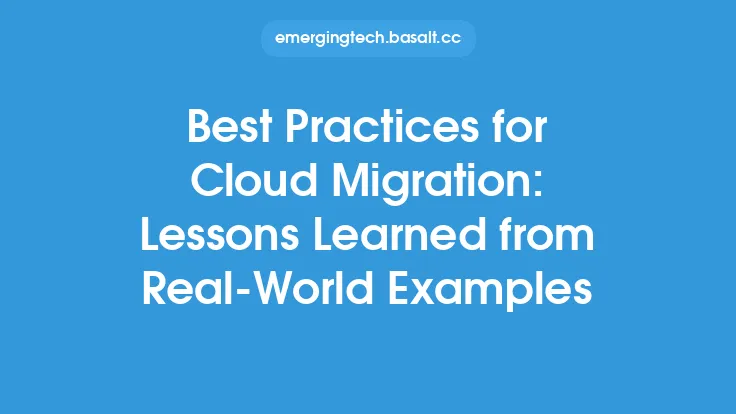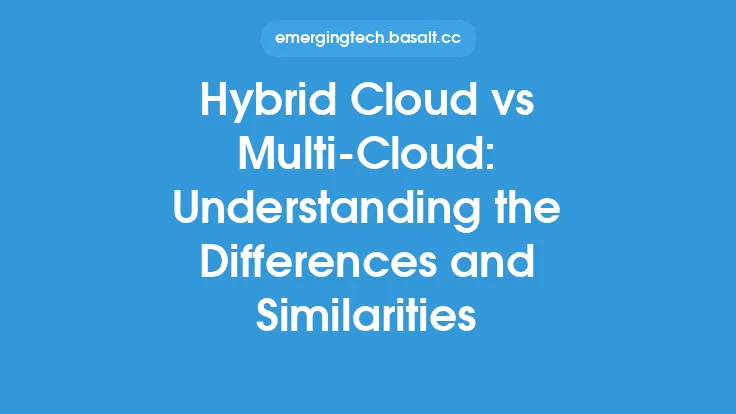When it comes to migrating applications and infrastructure to the cloud, businesses are faced with a crucial decision: whether to adopt a lift and shift approach or to re-architect their applications to take full advantage of the cloud's capabilities. This decision has significant implications for the success of the migration, the performance of the applications, and the overall return on investment (ROI) of the cloud migration project.
Introduction to Lift and Shift
The lift and shift approach involves migrating applications and infrastructure to the cloud with minimal changes to the underlying architecture. This approach is often chosen because it is relatively quick and easy to implement, as it does not require significant modifications to the existing application code or infrastructure. The lift and shift approach can be a good option for businesses that need to migrate quickly, such as those facing data center closures or end-of-life hardware. However, this approach may not take full advantage of the cloud's capabilities, such as scalability, flexibility, and cost savings.
Introduction to Re-architecture
In contrast, the re-architecture approach involves redesigning applications and infrastructure to take full advantage of the cloud's capabilities. This approach requires a more significant upfront investment of time and resources, as it involves re-designing the application architecture, re-writing code, and re-configuring infrastructure. However, the re-architecture approach can provide significant benefits, such as improved scalability, increased flexibility, and reduced costs. Re-architecture can also enable businesses to take advantage of cloud-native services, such as serverless computing, containers, and artificial intelligence (AI) and machine learning (ML) services.
Key Considerations for Lift and Shift
When considering the lift and shift approach, businesses should take into account several key factors. First, they should assess the complexity of their applications and infrastructure, as well as the dependencies between different components. They should also evaluate the cloud provider's capabilities and limitations, as well as the potential for vendor lock-in. Additionally, businesses should consider the potential impact on performance, security, and compliance, as well as the need for ongoing maintenance and support. Finally, they should weigh the costs and benefits of the lift and shift approach, including the potential for cost savings and the trade-offs in terms of flexibility and scalability.
Key Considerations for Re-architecture
When considering the re-architecture approach, businesses should take into account several key factors. First, they should assess the business requirements and goals for the migration, as well as the potential benefits of re-architecture. They should also evaluate the skills and resources required for re-architecture, including the need for cloud-native expertise and the potential for staff training and upskilling. Additionally, businesses should consider the potential impact on existing processes and workflows, as well as the need for change management and communication. Finally, they should weigh the costs and benefits of re-architecture, including the potential for long-term cost savings and the trade-offs in terms of upfront investment and risk.
Comparison of Lift and Shift and Re-architecture
When comparing the lift and shift and re-architecture approaches, businesses should consider several key factors. First, they should evaluate the speed and ease of migration, as well as the potential for disruption to existing operations. They should also consider the potential benefits of each approach, including cost savings, improved scalability, and increased flexibility. Additionally, businesses should assess the potential risks and challenges of each approach, including the potential for vendor lock-in, security risks, and compliance issues. Finally, they should weigh the long-term implications of each approach, including the potential for future-proofing and the ability to adapt to changing business requirements.
Best Practices for Cloud Migration
Regardless of whether a business chooses the lift and shift or re-architecture approach, there are several best practices that can help ensure a successful cloud migration. First, businesses should develop a clear cloud strategy and roadmap, including defined goals, objectives, and timelines. They should also assess their cloud readiness, including the evaluation of applications, infrastructure, and skills. Additionally, businesses should choose the right cloud provider and services, including the evaluation of capabilities, limitations, and costs. Finally, they should plan for ongoing maintenance and support, including the development of cloud-native skills and the implementation of cloud-based monitoring and management tools.
Conclusion
In conclusion, the decision between lift and shift and re-architecture is a critical one for businesses migrating to the cloud. While the lift and shift approach can provide a quick and easy migration, it may not take full advantage of the cloud's capabilities. In contrast, the re-architecture approach can provide significant benefits, but requires a more significant upfront investment of time and resources. By considering the key factors and best practices outlined in this article, businesses can make an informed decision about the best approach for their cloud migration project and ensure a successful transition to the cloud.





